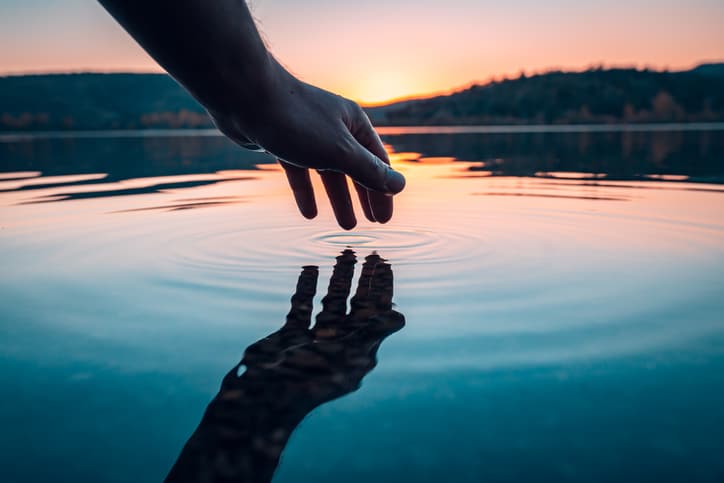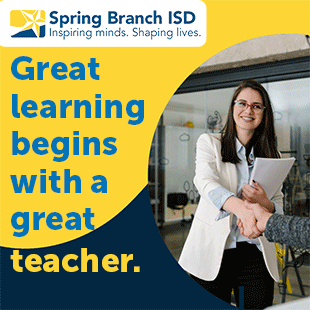

Occasionally, I’ll wear a long red-and-black huipil that was made for me a few years ago while I was teaching in Mexico. Every time I put it on, its bold colors and unusual style attract attention and spark the curiosity of my students and colleagues. With every wear, I look forward to telling the stories behind my huipil and about the colorful community of people that it represents.
For the past few summers, I’ve had the opportunity to travel to the small mountainous town of Xochistlahuaca (soh-chees-tlah-WAH-kah), Mexico, where I’ve participated and presented in professional development workshops with local teachers.
Xochistlahuaca is a small town in the state of Guerrero in southern Mexico, where the majority of people are Amuzgo, an Indigenous group that has maintained many pre-Hispanic aspects of their culture, including language and dress. The native language is Amuzgo, or Ñomndaa, as the people call it. It means “water language” or “words of water.”
Water is a reemerging theme in Xochistlahuaca. There is a stream running through the town and waterfalls and natural swimming holes nearby where the local children wade in the summertime. When it rains in Xochistlahuaca, it pours, giving the tropical plants and rich soil the moisture they need to grow the juicy mangos and other fruits and vegetables that thrive there. Xochistlahuaca is a natural paradise.
Since 2010, the schools in Xochistlahuaca and in the surrounding towns have been developing a dual-language immersion program that is unique to Mexico. The project is called Proyecto Guerrero 50/50. Before implementation of the project, the local schools provided most academic instruction in Spanish and used Amuzgo, the majority mother-tongue language, solely in the primary grades or as an occasional tool to aid comprehension.
Seeking ways to boost student achievement in their schools and to revitalize the language and culture of the Amuzgo community, the teachers chose to model their bilingual program after the research-based models of dual immersion that are used in many schools in the U.S. Characteristic of dual-immersion programs, students in Xochistlahuaca now learn academic content in two languages and the goal for all students is bilingualism and biculturalism. Students spend half of their day learning in Spanish and the other half of the day fully immersed in the Amuzgo language. Each language is given the same amount of attention and value.
With the support of INALI (National Institute of Indigenous Languages) and other local resources, the coordinator of the project, Dr. Joan Feltes, has organized professional development workshops for the past eight summers to support the local teachers in their pursuit of a successful dual-immersion program.
I was among the group of experienced dual-immersion teachers to travel to Xochistlahuaca for the summer workshop. We spent two weeks in the town and at the local school, sharing our passion for language learning with over 100 teachers from the 21 participating elementary schools in the project.
Every year there is a different theme. One year, the theme for the workshop was “Caring for the Environment.” We prepared and taught science lessons to the local students in Spanish while modeling Be GLAD (Guided Language Acquisition Design) strategies and other best teaching practices. The local teachers sat around the classroom, “fishbowl” style, and observed the lessons. After each lesson, the local teachers had the opportunity to reflect on what they had seen, ask questions, and discuss implications for their own teaching practice. We provided different ways to build background at the beginning of a lesson or unit, strategies to encourage participation and interaction among all students, and tips for making academic content more comprehensible.
With limited access to the internet and school supplies, we prepared our science lessons using materials that could be found in nature or in the streets. My second-grade students conducted an evaporation experiment utilizing water from the nearby stream and empty plastic bottles that were left on the sidewalk. Another class created their own water filters and explored the positive impact that trees have on water quality.
At the end of the two weeks, we were showered with hugs and handmade gifts as we said our farewells to the community. Both teachers and students thanked us for taking the time to visit and reminding us that their casa would always be our casa, too. As we drove away from Xochistlahuaca, I flipped through the journal that I had kept while I was there. It was filled with excited scribbles of notes and thoughtful reflections about what I had observed and experienced both in and out of the classroom.
While the gifts are dear souvenirs that will always remind me of the warm and colorful Amuzgo people, it is the exchange of conversations about teaching and learning that are invaluable. We tell our students all of the time that the best way to learn something is to teach it to others. Sharing my favorite teaching strategies with other educators has given me more understanding and confidence in my own classroom. Having other teachers observe my teaching and being open to suggestions and modifications gives me a different perspective on my practice and provides opportunity to reflect and improve.
While I was in Xochistlahuaca, I learned a few words in Ñomndaa, the language of the water. One of the words that I will never forget is quialua’, which means “thank you.”
Christine D’Aquanni is a Be GLAD® certified key trainer and an international educator with over 15 years of experience and dedication to raising the quality of education for all students. She holds a Master of Arts in Education with a specialization in dual-language development.





